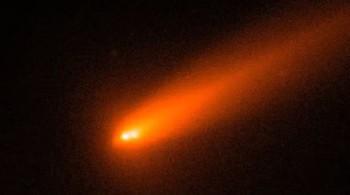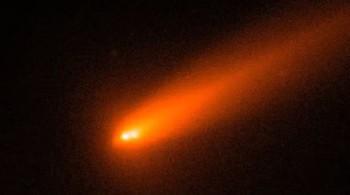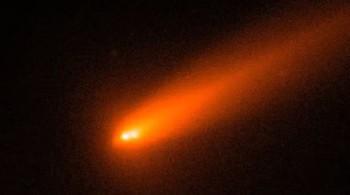
Comet C/2025 K1 (ATLAS) breaks into 3 after coming close to Sun
The fascinating world of astronomy has once again revealed a spectacular sight, as Comet C/2025 K1 (ATLAS) has broken into three pieces after swinging too close to the Sun. This extraordinary event was captured by astronomers using Italy’s Copernicus telescope, providing a unique glimpse into the fragile nature of comets. The comet’s nucleus became unstable after it passed close to the Sun on October 8, resulting in a dramatic fragmentation that has left scientists and astronomy enthusiasts alike in awe.
Comet C/2025 K1 (ATLAS) was first discovered in May 2025 by the ATLAS (Asteroid Terrestrial-impact Last Alert System) survey, a robotic astronomical survey system designed to detect near-Earth asteroids and comets. Initially, the comet was predicted to be a relatively small and inconspicuous object, but as it approached the inner solar system, astronomers began to take notice of its unusual behavior. The comet’s close proximity to the Sun, known as perihelion, occurred on October 8, when it came within approximately 38 million kilometers of the Sun’s surface.
As the comet drew closer to the Sun, its icy surface began to vaporize, creating a bright tail of gas and dust that trailed behind it. This process, known as outgassing, is a common occurrence for comets as they approach the inner solar system. However, in the case of Comet C/2025 K1 (ATLAS), the intense heat and radiation from the Sun caused the comet’s nucleus to become unstable, ultimately leading to its fragmentation.
The breakup of the comet was captured by the Copernicus telescope, located in Italy, which provided stunning images of the event. The photographs show two large chunks of the comet’s nucleus drifting approximately 2,000 kilometers apart from each other, with a smaller third piece visible to the left of the pair. This remarkable sight offers a unique opportunity for scientists to study the internal structure and composition of comets, which are thought to be remnants from the early days of our solar system.
The fragmentation of Comet C/2025 K1 (ATLAS) is not an unprecedented event, as comets are known to be fragile and prone to breakups. However, the proximity of this comet to the Sun and the subsequent capture of its breakup by the Copernicus telescope make this event particularly notable. Astronomers will continue to monitor the comet’s remnants, hoping to gain a deeper understanding of the internal processes that govern the behavior of these enigmatic objects.
The study of comets like C/2025 K1 (ATLAS) provides valuable insights into the formation and evolution of our solar system. Comets are thought to originate from the outer reaches of the solar system, where they reside in a region known as the Oort Cloud. This distant reservoir of icy bodies is believed to be a remnant from the solar system’s early days, when the planets were still forming and the Sun’s gravitational influence was much weaker.
As comets like C/2025 K1 (ATLAS) approach the inner solar system, they offer a unique window into the past, providing scientists with a glimpse of the solar system’s early composition and structure. The analysis of cometary material, whether through remote observation or direct sampling, can reveal valuable information about the solar system’s history, including the presence of water, organic molecules, and other essential ingredients for life.
In conclusion, the breakup of Comet C/2025 K1 (ATLAS) is a remarkable event that highlights the dynamic and unpredictable nature of comets. The capture of this event by the Copernicus telescope provides a unique opportunity for scientists to study the internal structure and composition of comets, offering valuable insights into the formation and evolution of our solar system. As astronomers continue to monitor the comet’s remnants, they will undoubtedly uncover new and exciting information about these enigmatic objects, further expanding our understanding of the cosmos.




